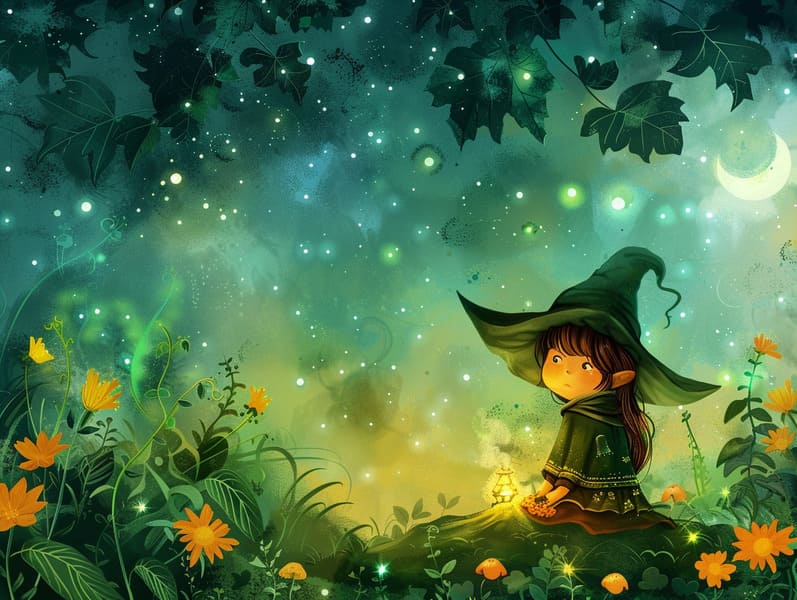The Genesis of Traditional Fairy Tales with the Unfading Captivation.
The Genesis of Traditional Fairy Tales with the Unfading Captivation.
Blog Article

Best fairy tales have timeless appeal. These narratives have been whispered from one generation to the next centuries before they were ever inscribed. They emerged from a variety of backgrounds, including Indigenous traditions. They were initially conveyed among older generations, often carrying themes and messages related to the societal norms and beliefs of the time.
Jacob and Wilhelm Grimm, Jacob and Wilhelm, were among the first to compile many of these beloved fairy tales. Their volume, "Grimm's Story Collection," included classics like "Ashenputtel," "The Story of Hansel and Gretel," and "Snow-White and Rose-Red," which have since become hallmarks in the world of children's fairy tales. Similarly, Hans Christian Andersen's whimsical tales, such as "The Mermaid," and "The Duckling that Could," have floated into hearts worldwide, establishing their place in the pantheon of famous fairy tales.
Despite their ancient origins, classic fairy tales remain as pertinent as ever, especially as bedtime stories for kids. These enchanting tales are now available in numerous formats, including colorful picture books, charming animations, and internet fairy tales.
Their ongoing significance can be traced to several enchanting factors:
Moral Lessons: Timeless fairy tales often impart important moral lessons. Narratives like "The Shepherd Boy and the Wolf" teach the merit of truth, while "The Tortoise and the Hare" highlight the merits of steadfastness and modesty. These tales offer young ones clear distinctions between correct and incorrect, guiding their moral compass in a kind yet profound way.
Kindness and Comprehension: Classic fairy tales frequently portray characters facing tests and troubles, fostering kids to connect with their struggles and cheer for their triumphs. For instance, "The Tale of Beauty and the Beast" conveys the virtue of seeing beyond the surface to acknowledge the inner being of a being, building insight and knowledge.
Cultural Comprehension: Many timeless fairy tales are deeply embedded in the cultural contexts from which they developed. Engaging with these fairy tales can provide intriguing perspectives into different heritages, cultivating a sense of cultural appreciation and discernment.
Creativity and Fantasy: The enchanted elements in old fairy tales—enchanted forests—awaken children’s innovative ideas. These stories lead readers to extraordinary realms, invigorating creative thinking and a sense of astonishment that persists a lifetime.
Ancient fairy tales are not only bewitching but also didactic. They serve as spellbinding tools in fostering various mental and emotional abilities in little ones. When traditional fairy tales are spoken out loud, they advance language proficiency by introducing new terms and meanings and complex sentence structures. This practice also cultivates hearing abilities and mindfulness, as young readers follow the story, enthusiastic to see what happens next.
Furthermore, contemplating the themes and characters of fairy tales can nurture evaluative skills and problem-solving abilities. Young ones are taught to spot patterns, forecast, and make sense of cause and effect. These explorations also facilitate little ones articulate their thoughts and feelings, cultivating their emotional intelligence.
In today’s digital era, the presence of web-based fairy tales has made these fairy tales more accessible than ever. Digital sites and applications feature comprehensive collections of bedtime fairy tales that can be experienced or listened through anytime, anywhere. Fairy tales read out loud are particularly popular, giving an interactive method for young readers to savor these delightful tales. Audiobooks and voiced videos carry characters and settings to life, often enhanced by captivating audio effects and background music that improve the storytelling journey.
The unfading fascination of timeless fairy tales lies in their ability to evolve to modern times while retaining their underlying messages. Contemporary takes of these narratives often highlight more different characters and modern settings, making them familiar to today’s audience. However, the core values of daring, kindheartedness, and justice remain unchanged, continuing to influence listeners of all ages.
Traditional fairy tales also offer a sense of warmth and homeliness. They bring a well-ordered awesome site narrative with a transparent beginning, middle, and end, often winding up with the ending of conflicts and the triumph of good over evil. This reliability can be easing for young readers, extending a sense of unchangeability in an unstable world.
Traditional fairy tales continue to enchant and guide new generations, maintaining their enchantment and value in modern society. As children's bedtime stories, they yield a perfect blend of magic and knowledge, sustaining moral values, empathy, and creativity. The presence of web-based fairy tales and the widespread nature of fairy tales recited assure that these classic narratives remain attainable to new generations.
By conserving and passing on these tales, we continue to venerate the rich tapestry of fantasy and cultural heritage. Whether you are discovering a richly illustrated book, accessing a digital library, or listening on an audio story, the beauty of ancient fairy tales is always within reach. These fairy tales show us of the persistent magic of tales and its ability to bind us across centuries and lands.
Whether you are reading a gorgeously illustrated book, browsing a online library, or hearing an audiobook, the wonder of Grimm's fairy tales is always within reach.
These stories remind us of the invariable impact of narratives and its ability to join us across time and space, establishing a link that charms and informs alike.